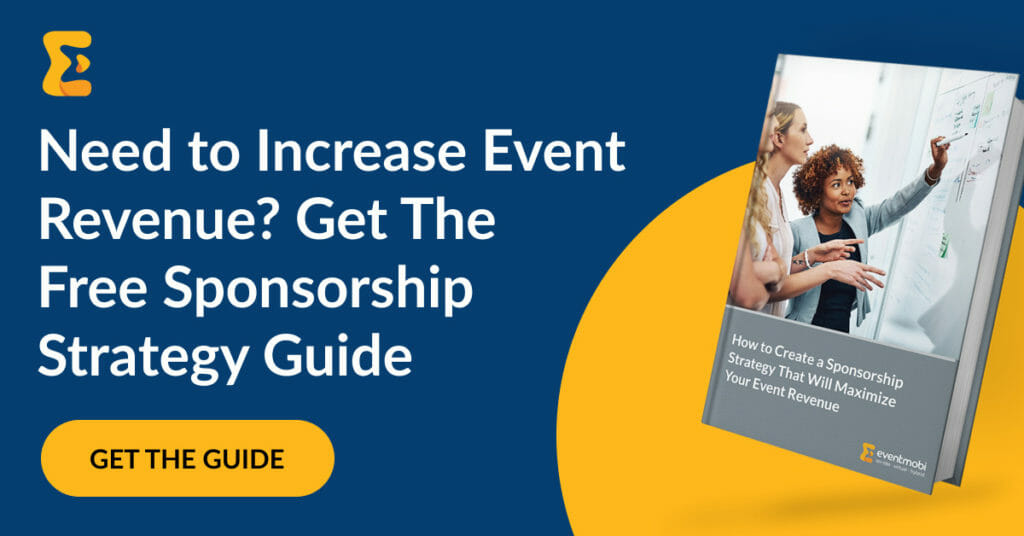How Association Stakeholders Can Use Event Data to Achieve Strategic Goals
How can associations make the most of the data captured at their events? Check out these 6 mini-case studies to learn more. Inspired by our customers, they showcase how different association stakeholders can use their event data and analytical insights to achieve common strategic goals.
1. Educate and Engage Members In-Person and Online, Offer Revenue Partners Real ROI, Increase Profits from Events

CEO,
Trade Association
Event Type
- Simultaneous live hybrid conference and trade show
Event Goals
- Meet the educational needs of industry professionals: We don’t want to ignore the large virtual audience we attracted during the pandemic, particularly those who can’t or won’t travel because of personal responsibilities, budget or schedule constraints, physical disabilities, health concerns, or employer restrictions.
- Increase not only revenue but profit: Because our strategic plan includes investing in and developing new programs, we can’t afford the declining registration numbers we see at other associations.
- Take care of our revenue partners: They’ve had a rough few years. We can’t expect them to stick by us out of loyalty. We must deliver ROI.
For our first hybrid event, we streamed conference sessions live to a virtual audience and hosted a virtual expo where attendees could book 1:1 video meetings with exhibitors. We were pleased to see the data showing the session live streams keeping the virtual audience’s attention. Attendee demographic and engagement data convinced us that hybrid is a viable option for our future, especially with segments who were hard to reach prior to the pandemic, like early career professionals and those in certain positions.
Attendee feedback was positive, but I was anxious to hear what exhibitors had to say about their virtual experience. In the months leading up to the show, our team gave them advice about their virtual presence and marketing materials. Data showed that effort paying off—for everyone! We knew we’d get positive feedback from exhibitors once we saw how many on-site and virtual meetings they booked, and the number of banner ad and external URL clicks they got from on-site and virtual attendees.
Attendees clicked and responded to banner ads for sponsored sessions in the mobile app and the virtual event space. Our revenue partners were pleased with the attendance at their sponsored sessions—both on-site and virtual. We also had good participation rates in our virtual networking activities. On-site attendees used the app to engage too. We were surprised by the cross-pollination going on between the two audiences.
I feel so confident about a hybrid event strategy for our future that we’re making big changes close to home. With employees working remotely, we plan to convert some unused office space into a studio for live streaming webinars and recording high-quality video content for continuing education. We will host all this content in a video library in a new virtual event space that members can access year-round.
Event Data Impact
- We’re making decisions about future programs based on content engagement and networking participation data of different attendee segments: virtual/in-person, members/non-members, professional/supplier, company size, position, and career stage.
- Our government affairs team collected valuable poll data from the app that will guide policy development.
- Based on strong registration, exhibit, and sponsorship revenue and solid virtual leads for exhibitors, we’re allocating more resources to support revenue partner success and expanding our menu of sponsorship options.
2. Improve Member Retention, Increase Member Acquisition, Engage Members Year-Round

VP of Membership & Engagement, Trade Association
Event Type
- Year-round event community
Event Goals
- Improve member retention by extending our reach into member companies: Connect with more member company employees and encourage them to participate in association activities throughout the year, not just a few days at the annual meeting.
- Increase member acquisition: Non-member attendees are warm leads we can nurture in our year-round event community.
- Cultivate a receptive audience for future activities and events. Use education as a hook to get members (and non-members) into the community where we encourage more engagement.
We promoted our year-round event community in our registration campaigns and launched it a month before our annual meeting and expo. Attendees appreciated having one place for socializing in pre-event meetups, attending the virtual conference and expo, participating in post-conference events, and watching on-demand content. Post-event adoption rates were higher than expected, so now the pressure is on us to consistently deliver fresh content—a challenge we’re happy to have.
We repackaged content from our past conferences, webinars, and podcasts. We also created bonus content and scheduled live events exclusively for community members. Many conference speakers returned to lead case study sessions. Sponsors have also jumped on board to facilitate fireside chats with VIPs and other guided conversations—a new revenue stream.
Community members have access to group discussions, messaging, and 1:1 video meetings. We’ve seen mixed results with gamified challenges but have a decent-sized group of committed participants so we’re keeping that feature.
Event Data Impact
- We’ve already seen a correlation between community participation and member company retention. Member company employees who are regularly visiting the community are also more likely to micro-volunteer, subscribe to newsletters, and register for other events. The future looks bright!
- My team is tagging members (and non-members) by interest, career stage, and job position based on their event participation and engagement with content. This data will guide segmentation for targeted recruitment, onboarding, and retention campaigns, as well as education and event promotions.
- Engagement data is helping us identify at-risk members. We’re also identifying potential volunteers in the top 10 challenge and group discussion participants.
3. Drive Event Registrations, Engage and Entertain a new In-Person Audience

Trade Association
Event Type
- In-person niche conference
Event Goals
- Experiment with a new conference format.
- Reach and gain the loyalty of a member/market segment.
- Offer a unique in-person experience that entices people to travel: In our industry, many companies are short-staffed so employers are reluctant to let employees travel.
This is the first time we’re hosting an in-person conference for sales and marketing professionals. A dozen or so companies sent these employees to our annual meetings in the past, but we’ve never focused on this segment. Yet, we’ve seen an increase in their virtual program attendance, and polling data confirmed their interest in a more substantial event. We thought it was worth taking a chance on this conference since these extroverts were dying to get back to in-person events. But it had to be enticing enough for employers to let them go. We focused on providing a social learning experience: interactive sessions—no lectures—and time with industry legends.
Since this group works in booths for a living, they would rather hang out talking in the halls than visiting exhibitors. We created challenges in the mobile event app to drive them into the expo hall. This competitive bunch broke our gamification participation record!
We polled them on-site about hot topics arising in session discussions and watched trending topics in the app’s group discussions. When a topic met a certain threshold, we scheduled a hackathon, set up a panel or VIP interview in a lounge, or put together a fishbowl session. The post-event survey feedback has been crazy good. Now, we’re thinking, what other segment would enjoy a conference experience like this?
Event Data Impact
- Real-time data allowed us to schedule impromptu programs, which created a buzzy sense of anticipation and excitement because attendees never knew what might happen next.
- App data is helping us understand the attendee journey: their comings and goings, session check-ins and ratings, exhibitor visits, and poll and discussion participation. We’ve seen varying behavior by career stage and past engagement that will inform future programming, marketing, and pre-event communication.
- Post-event survey data showed what they loved about the event and where we can improve. We over-scheduled them for sure. We also found out which session leaders fell back on old lecturing habits instead of applying effective adult learning practices.
4. Increase Learning and Networking Opportunities, Differentiate From Competitor Events

Professional Society
Event Type
- Asynchronous hybrid conference
Event Goals
- Test out a new format: Offer a more effective learning and relationship-building experience than the usual two days of PowerPoint-dominated sessions.
- Coax people back to virtual: With the return of in-person conferences, we don’t want to lose the audience for our virtual events. A program like this can help keep them engaged online with us.
- Stand out in the marketplace: Past session ratings and feedback made it clear we must offer more effective and enjoyable education—and differentiate our conferences from our competitors’.
We took a chance on a hybrid format with a new conference for remote managers. Since these professionals manage remote and hybrid teams, they’re an ideal audience for this type of experience. Attendees watched on-demand content and participated in online group discussions before the in-person component began. It’s the flipped learning concept: everyone gets up to speed on the content and learns what they can on their own before meeting in person where they deepen their learning together—a method they can apply in their own workplaces too.
After registration, we invited attendees to pick a track or topic associated with our pre-event content. We sent email reminders and app alerts to people who hadn’t viewed any videos or participated in any discussions. When we saw a complete lack of interest in one evergreen topic, we surveyed registrants about replacements. The demand for one issue was overwhelming, so we made on-site programming adjustments and hosted a pre-event webinar that had the liveliest chat we’ve ever seen.
On-site, the sessions associated with pre-event content were the most highly rated by far. Besides the usual session evaluations, we introduced post-event surveys for the sessions associated with pre-event content. We asked attendees how they would apply their new skills and knowledge on the job. We followed up 45 days later to see how that application was going and to elicit testimonials for next year’s marketing campaigns because we’re doing this again for sure. The market is there for introductory and advanced sessions next time.
Event Data Impact
- Thanks to real-time data like the number of video views, we made last-minute, successful changes to both our online and in-person programming. Attendees noted and praised our agility—we’re not so stodgy anymore!
- We’re using video views and session check-in data to segment attendees for newsletter, webinar, and education promotions.
- During the conference, we saw higher participation in group discussions and messaging on the event app among pre-event participants than other attendees, although we met our metrics on their participation too. We’re exploring ways to keep that engagement going throughout the year.
5. Create Ongoing Sponsorship Opportunities, Help Exhibitors Connect with More Buyers

Event Type
- Virtual conference
Event Goals
- Increase revenue from year-round sponsorship contracts so we’re not relying too heavily on the annual conference.
- Get 50% of exhibitors to participate in our new revenue partner coaching program.
- Increase the ROI (leads) for virtual exhibitors and sponsors, compared to last year.
Because we learned our virtual audience did not want to spend an entire day in front of the computer watching conference sessions, we changed the format to three half-days of programming spread over a week. We offered the virtual expo, networking and discussions, and exhibitor learning labs during downtime.
At our last two virtual conferences, we were disappointed by our exhibitors’ marketing efforts, so this year, we showed them how it should be done. We shared training videos, coached them on content marketing, and provided ideas for attracting virtual booth visitors. Post-event reports made it easy for exhibitors and sponsors to see the ROI they received from these marketing techniques, such as sponsored polls, gamification challenges, and banner ads on the home screen or elsewhere in the virtual event space.
Many exhibitors upgraded their package to host express learning labs when regular sessions weren’t scheduled. Another new opportunity also sold out quickly: sponsor-hosted breakout room discussions. These interactive online gatherings were a bit hit with attendees and many industry partners asked about sponsoring one in the future.
Event Data Impact
- Exhibitors who participated in our training enjoyed a much higher number of video views, clicks, downloads, video meeting requests, and, ultimately, leads. We’re sharing this data with prospective exhibitors for future events and showing the ones who didn’t participate this time how their booth performance compared to others in their market.
- Analyzing exhibitor booth traffic, video views, and learning lab session attendance gives us a sense of trending products/services—valuable information for recruiting new exhibitors and sponsored content providers.
- Increased ROI for exhibitors and sponsors means we can increase the price of our packages. We’re also talking with many of our successful partners about upgrading to year-round sponsored content contracts.
6. Extend the Reach of In-Person Event Content, Ensure no Member is Left Behind

Vice President of Professional Development, Professional Society
Event Type
- In-person conference with extended virtual access
Event Goals
- Increase revenue and expand audience for online learning programs by repurposing conference content in creative ways without straining staff bandwidth.
- Increase registration value for in-person attendees.
- Meet educational and CEU needs of professionals who can’t or won’t attend in-person events.
This was the second year we offered extended access to our in-person conference session recordings. But this year, after the 30-day attendee viewing period, we experimented with new ways of repurposing session content.
We focused our marketing on the tracks and topics with the highest attendee ratings and post-event views. Our team created and sold tiers of access to these bundled recordings. These ‘learning passes’ included access to recordings relevant to different audiences segmented by interest, position, and career stage/knowledge level. For example, the most popular career stage learning pass was ‘aspiring C-suite’ and the most popular pass of all was ‘cryptocurrency.’
We brought back several popular speakers for encore showings of their sessions. They were instructed to stop the recording every 10 to 15 minutes to lead group exercises or discussions. We want to show people that online learning, when done right, can be just as stimulating and social as in-person learning. A pilot group of chapters is interested in licensing the content, handouts, and exercises for watch parties. 90-day learning passes are another concept we’re exploring. So many ideas! And they’re initiatives that won’t overwhelm our staff.
Event Data Impact
- On-site session check-in, video views, learning pass purchases, and encore showing attendance data is helping us understand which topics are most in demand by different audience segments. This insight guides our programming decisions for online education.
- My marketing and membership colleagues are relying on this data to tag member and customer records with information about interests, positions, and career stages. They’re using this information in targeted promotional campaigns for newsletter subscriptions, volunteer opportunities, product sales, and our department’s online education programs.
- Based on speaker ratings (in-person and video views) and surveys, we have a list of prospective instructors for future webinars and online courses.
